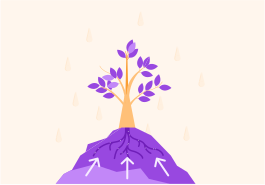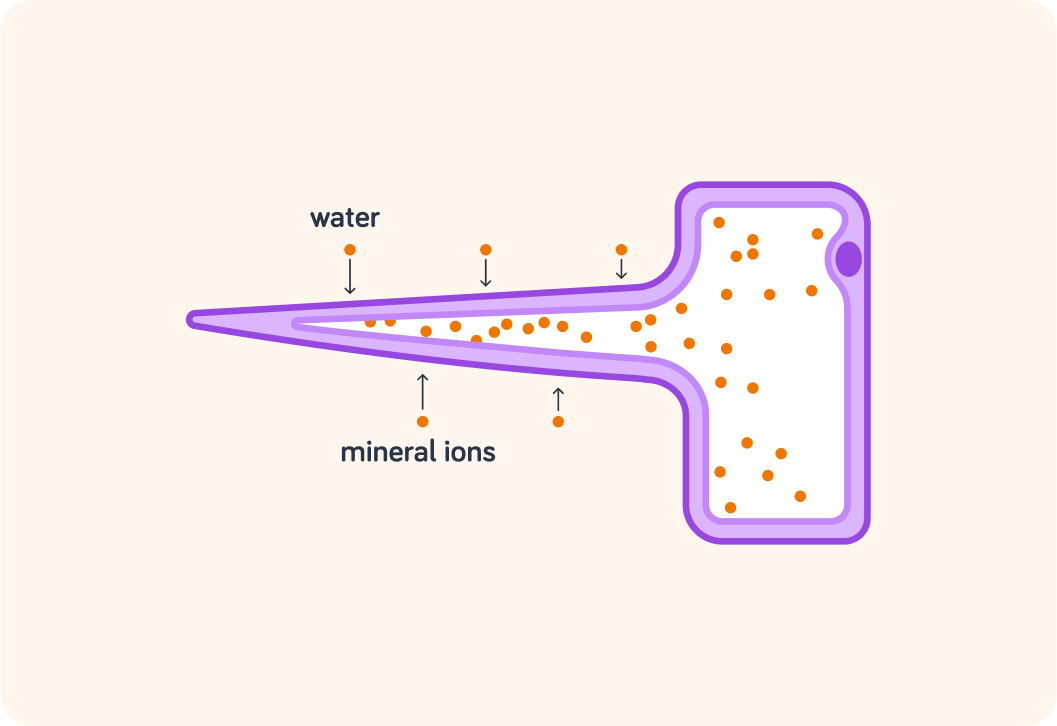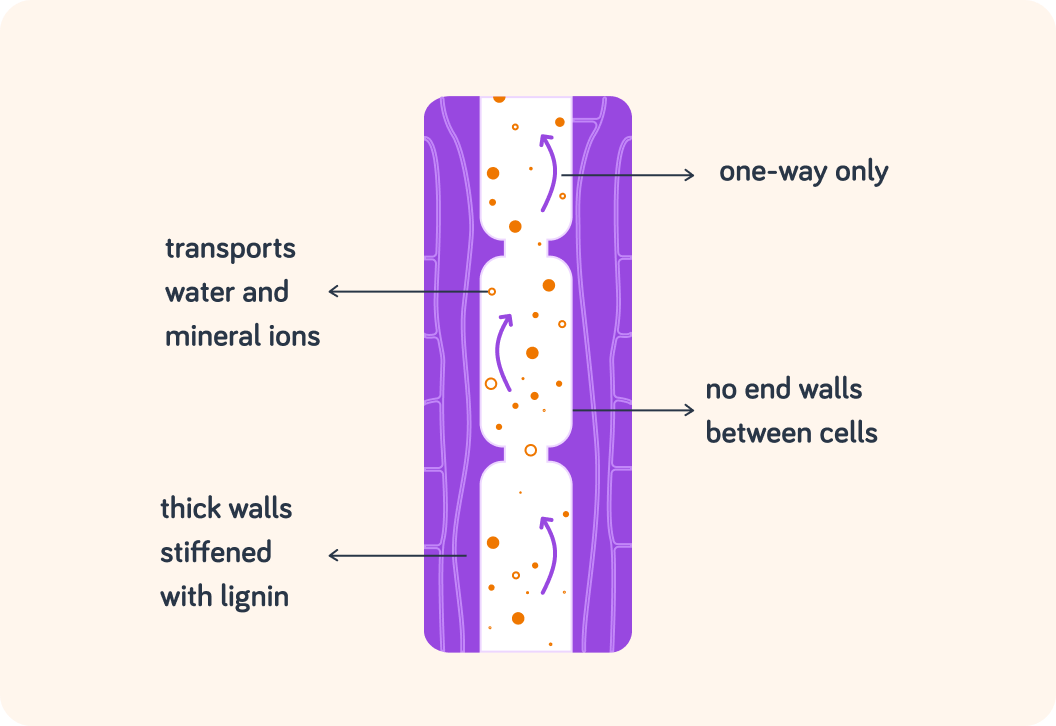YOU ARE LEARNING:
Root Hair Absorption

Root Hair Absorption
We will examine how the structure of root hair cells, xylem and phloem are adapted to their functions.
Plants have specialised cells and tissues that allow it to absorb (take in) and transport (move) the substances it needs. Pick the two substances that a plant can obtain from the soil, by absorbing through the roots.

You can select multiple answers
Plants absorb water and mineral ions through specialised cells. What are they called?

Root hair cells are specially adapted cells that are extremely good at absorbing water and mineral ions. What do you notice about root hair cells compared to other cells?
A) They have a longer membrane B) They have two nuclei


A root hair cell has an extended, thin cell membrane. This gives it a large surface area. Now, this is clever because it allows the root hair cell to absorb water and mineral ions faster. A bigger surface area is kind of like having a bigger gate to a palace. The bigger the gate, the more water and mineral ions can get through!
Water diffuses into the root cell by a process called osmosis. The water moves from an area of high to low concentration. This does not require any energy! It does require energy to move mineral ions into the root hair cell, though. What do you think we call that process?

Active transport is the process where plants move mineral ions from a low to high concentration. As the movement is against the concentration gradient, this requires energy. As root hair cells need a lot of energy, they will also have many mitochondria, to release the energy.
A plant has a xylem (zy-lem) vessel to transport substances from the roots to the leaves. What are the two substances that are transported from the roots to the leaves via the xylem?


A plant has another vessel called a phloem ****** (flow-em) to transport dissolved food substances throughout the plant. Remember 'f' for "food" and "phloem". The plant makes its own food from the sugar that it produces during photosynthesis. What's the name of that sugar?

So plants have two types of transport vessels: Xylem and phloem vessels
The vessels transport substances from the roots to the leaves.

Xylem vessels...
transport water and mineral ions.

Phloem vessels...
transport food substances (like glucose). Remember "phloem" starts with the same "f"-sound as "food".

Water gets sucked up the xylem, a bit like a straw. The suction occurs due to water evaporating at the leaf surface. What is the name of this process?

